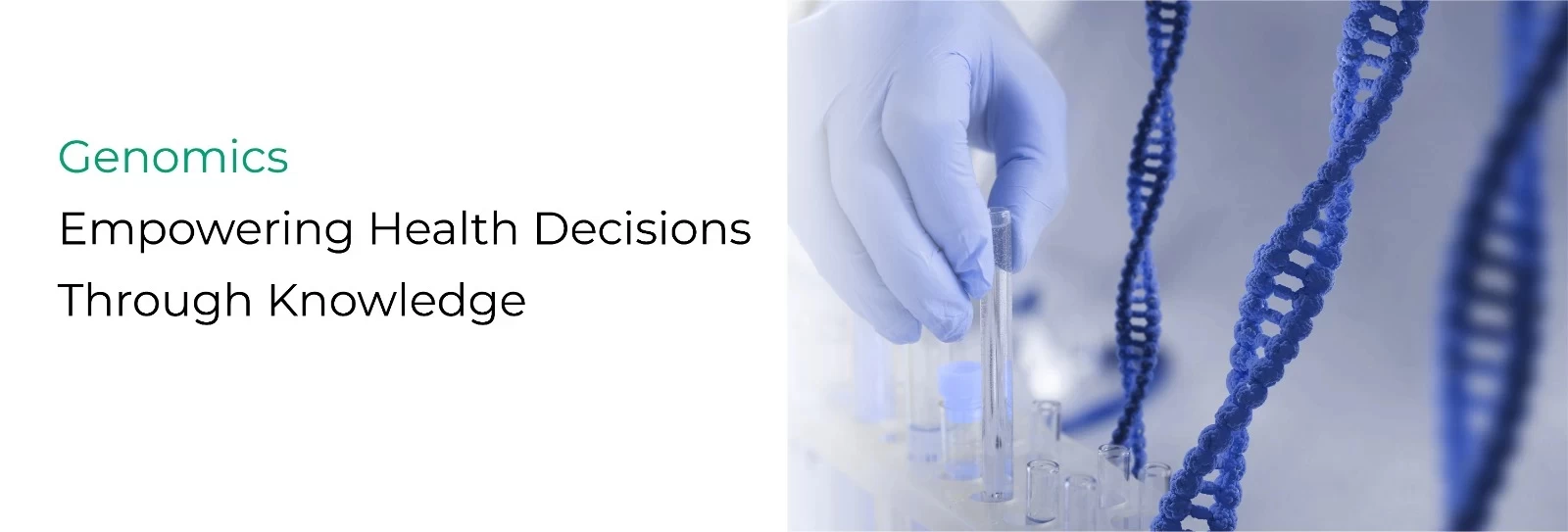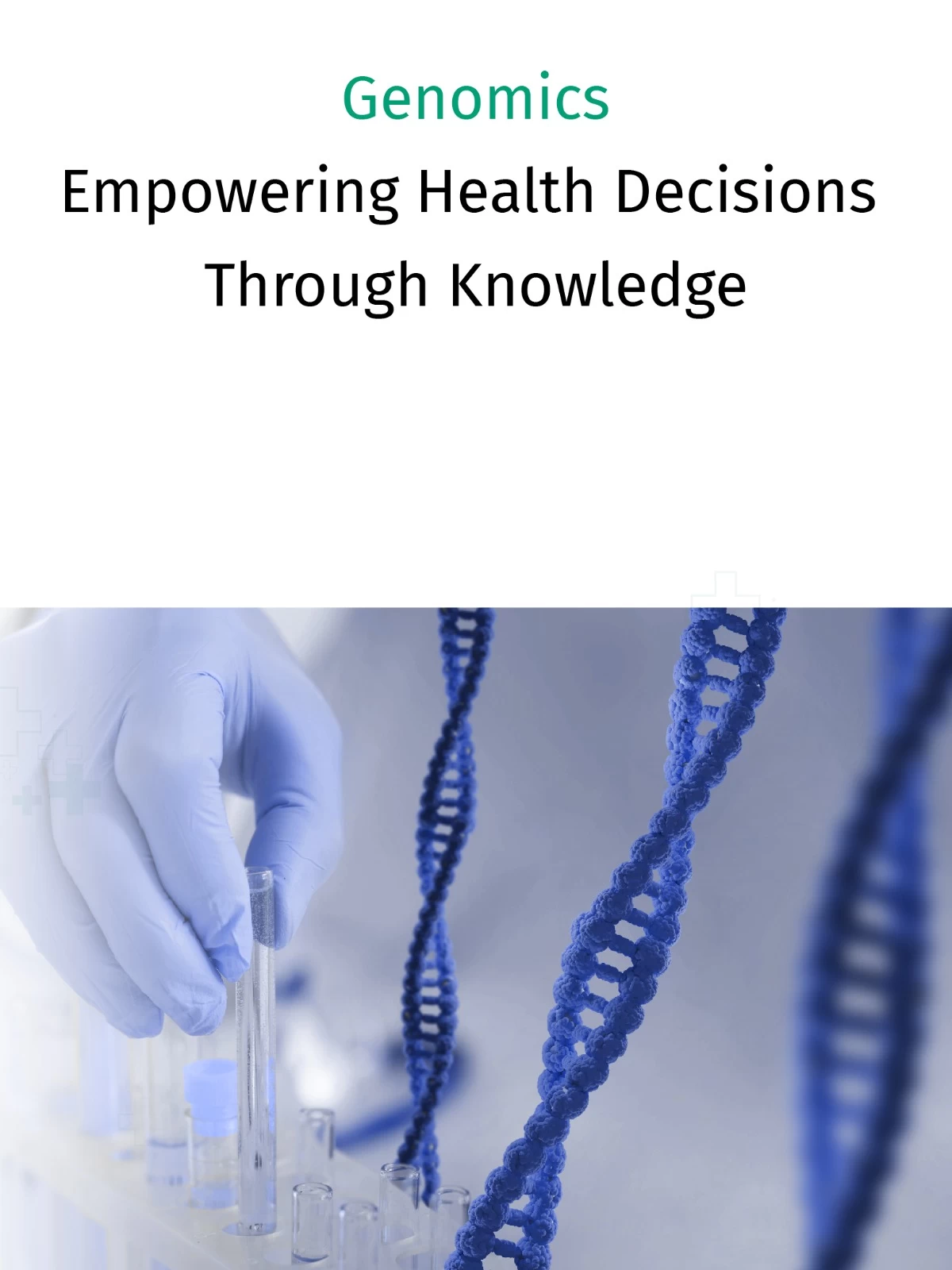About Genomics
Genomics is the study of our genes: Genes that encode information in the form of DNA for making proteins; proteins that are the building blocks for almost all kinds of tissue, organs and systems in the body. With the help of scientific capability of decoding of the protein sequencing DNA, now we are capable of knowing the information in the DNA we are carrying in our cells. The change of an information in the code may direct formation of nonfunctional/ dysfunctional protein(s) that may ultimately lead to impairment of specific function for which that protein is naturally assigned for. We call it a disease or disorder and knowing it before any delay can help us prevent the consequences of the disease. Therefore, genomics can help us to understand the genetic basis of disease and help us to know what we should do or what we should not.
Genomics Services_RT-PCR/Sanger
Infectious Biology
- Cdx_SARS-Cov-2
- Cdx_H1N1+H3N2
- Cdx_Influenza Panel
- Cdx_Respiratory Panel
- Cdx_TB-NTM
- Cdx_HPV Detection
- Cdx_HPV-Genotyping
- Cdx_CT/NG Panel
- Cdx_STD-Panel
- Cdx_HIV Qualitative
- Cdx_HIV Quantitative
- Cdx_HBV Qualtitative
- Cdx_HBV Quantitative
- Cdx_HCV Qualitative
- Cdx_HCV Quantitative
Cancer Biology
- Cdx_EGFR
- Cdx_KRAS
- Cdx_NRAS
- Cdx_BRAF
- Cdx_BCR-ABL1-Qualitative
- Cdx_BCR-ABL1-Quantitative
- Cdx_PML-RaRa Qualitative
- Cdx_PML-RaRa Quantitative
Genetic Disorders
- Cdx_HLA-B27
- Cdx_Factor-V Leiden
- Cdx_MTHFR
- Cdx_FMR1
- Cdx_ATP7
- Cdx_Single Variant
Genomic Services-Next Generation Sequencing
Diagnostics Tests
- Cdx_BRCA Panel (BRCA1 & BRCA2)
- Cdx_HBCO Panel (Hereditary Breast & Ovarian Cancer HBOC Panel
- Cdx_HRR Panel (Homologous Recombination Repair HRRPanel)
- Cdx_Exo-Clin (Clinical Exome)
- Cdx_Targeted Therapy Panel (Cancer HotSpot Panel)
- Cdx_cfDNA Panel (Cell-Free Lung & Colon Cancer Panel)
Research Tests
- Cdx_Exo-Whole (Whole Exome for Rare Disease)
- Cdx_Meta-16S Metagenomics
- Cdx_Meta-Shot (Shotgun Metagenomics)
BRCA1 & BRCA2
BRCA1 & BRCA2 are the important genes carrying information for making proteins important for repairing of DNA damage in the cell. Any such alteration or change in their DNA sequence (genetic alteration/mutation), which may affect the function of these proteins may fail to help cell in repairing its DNA damage. The cells dividing with damaged or problematic DNA may lead to start of tumor formation in the breast, ovary or other associated organs of body.
Next generation sequencing helps us t find out if there is any problematic change in the BRCA1 &/or BRCA2 gene that might lead to trigger cancer. These changes in DNA might have been transferred to us from our parents as we carry 50% of the DNA from each of our parents.
BRCA1 & BRCA2 or collectively called BRCA test or BRCA status, is actually sequencing of our DNA portions coding for these genes and can be conducted on simple blood sample in case of germline BRCA testing (Germline-BRCA test). Germline testing is performed on our normal cells to understand if the change is already there in our cells and confirm that we inherit this alteration. If someone is detected with breast or ovarian cancer and mutation in the germline cells (blood cells) not present then your physician/doctor may ask for a BRCA test on the tissue sample/biopsy taken from the site of tumor. This will be to confirm or to rule out if the mutation is BRCA gene(s) is involved in the occurrence of the tumor or not. This test conducted on tissue sample/biopsy is known as somatic-BRCA test.
Hereditary Breast and Ovarian Cancer
Hereditary Breast and Ovarian Cancer syndrome (HBOC) is a genetic condition that makes it more likely that a person may get breast, ovarian, or other cancers. HBOC is hereditary, meaning that it is caused by a mutation (genetic change) that can be passed down in families. A genetic test can help determine if your personal or family history of cancer was caused by HBOC. If you are found to have HBOC, there are interventions that can help prevent cancer or detect it early. There are genes other than BRCA1 & BRCA2 that can be involved in the triggering of the cancer. Therefore, a panel of HBOC associated genes along with BRCA1 & BRCA2 can be tested for any genetic change to find out if these might be the mutated or not able to perform their function properly that could lead to cancer.
Homologous Recombination Repair (HRR) Panel
Hereditary Recombination Repair (HRR) panel genes are the most of the genes involved in repair of damaged DNA. There could be multiple physical or environmental conditions or stresses where DNA might get damaged. Our cells have a system to repair this damaged DNA to avoid any mutated DNA to be transferred to the daughter cells during cell division. However, there may occur some mutations (genetic changes) that might render one of these genes to translate into a proper functional protein. This dysfunctional/non-functional or truncated protein not able to repair the damaged DNA and the cells carrying damaged DNA may become cancerous. Now, there is panel of HRR known genes to be tested to understand if there is any mutation in any of these genes set that might be the cause of triggering the tumor formation.
Clinical Exome
Clinical Exome panels are the NGS panels with large number of genes, generally involving a portion of the protein coding exons and important flanking regions (splice junctions). This test is done for identifying disease-causing DNA variants within this protein coding region. The test also helps in understanding the cumulative effects of more than one related DNA alteration (mutations) if found together in the DNA sample of the patient.
Cancer HotSpot Panel
Cancer HotSpot panel is used for identifying DNA alterations (mutations) in protein coding regions, copy numbers of change in the structure of genes such as fusion genes that are most relevant and well known cancer associated. This panel specifically contains genes that provide information if some clinical intervention (targeted therapy) can be done.
Cell-Free Lung Cancer Panel
Cancer can be detected using cell-free DNA in many of the cancers, however the detection depends upon the type and stage of cancer. About 50%–70% of stage I or II cancers across those different cancer types can be detected using this method. This sequencing panel is designed mainly based on the existing knowledge of the genetic alterations in cancers. This panel is primarily use detection of cancer in cases wherein it’s difficult to get a tissue biopsy (a small piece of suspected tumor tissue), and secondly, for monitoring of a certain gene mutation which is already known in the cancer of the patient.
Whole Exome for Rare Disease
Some difficult to understand cases of diagnosis, especially the rare genetic disorders can be helped out by sequencing of all the protein coding region of the DNA. In this panel an individual's genome and related sequences, representing approximately 1% of the complete DNA sequence are studied to find the alterations (mutations) associated with the current symptoms of the individuals. This can also help find out novel DNA changes which are not there in existing knowledge bases and not mentioned in literature. Therefore, the new findings should be considered with high precautions, and must be validated by multiple methods of testing and interpretations.
16S Metagenomics
The prokaryotic 16S rRNA gene is approximately 1500 bp long, with nine variable regions stacked between conserved regions. The 16S is a common housekeeping genetic marker and there are reasons why its variable regions are frequently used for phylogenetic classification of genus or species in diverse microbial populations. These reasons include (1) its presence in almost all bacteria, and often existing as a multigene family, (2) the function of the 16S rRNA gene is conserved over time suggesting that random sequence changes are a more accurate measure of time (evolution), and (3) the 16S rRNA gene (1,500 bp) is large enough for informatics analysis purposes.
Shotgun Metagenomics
In nature all multicellular organism are living in one or the other kind of association with their microbial community known as natural flora. These microbial communities which are now adapted with their counter friendly-hosts are helping them for their nutritional and immunity requirements are microbial levels. Therefore, it’s a dire need to understand how we interact with our flora and how this help us and our environment. However, not all microbes can be culture in the laboratory. High-throughput sequencing technologies and robust computational pipelines are helping shotgun metagenomics methods to transform the whole field of microbiology. Understanding the functions and characterizing specific strains of these microbial communities can support therapeutic discovery and innovative ways to synthesize products using microbial factories and can help in understanding the contributions of microorganisms to planetary, animal and human health.


